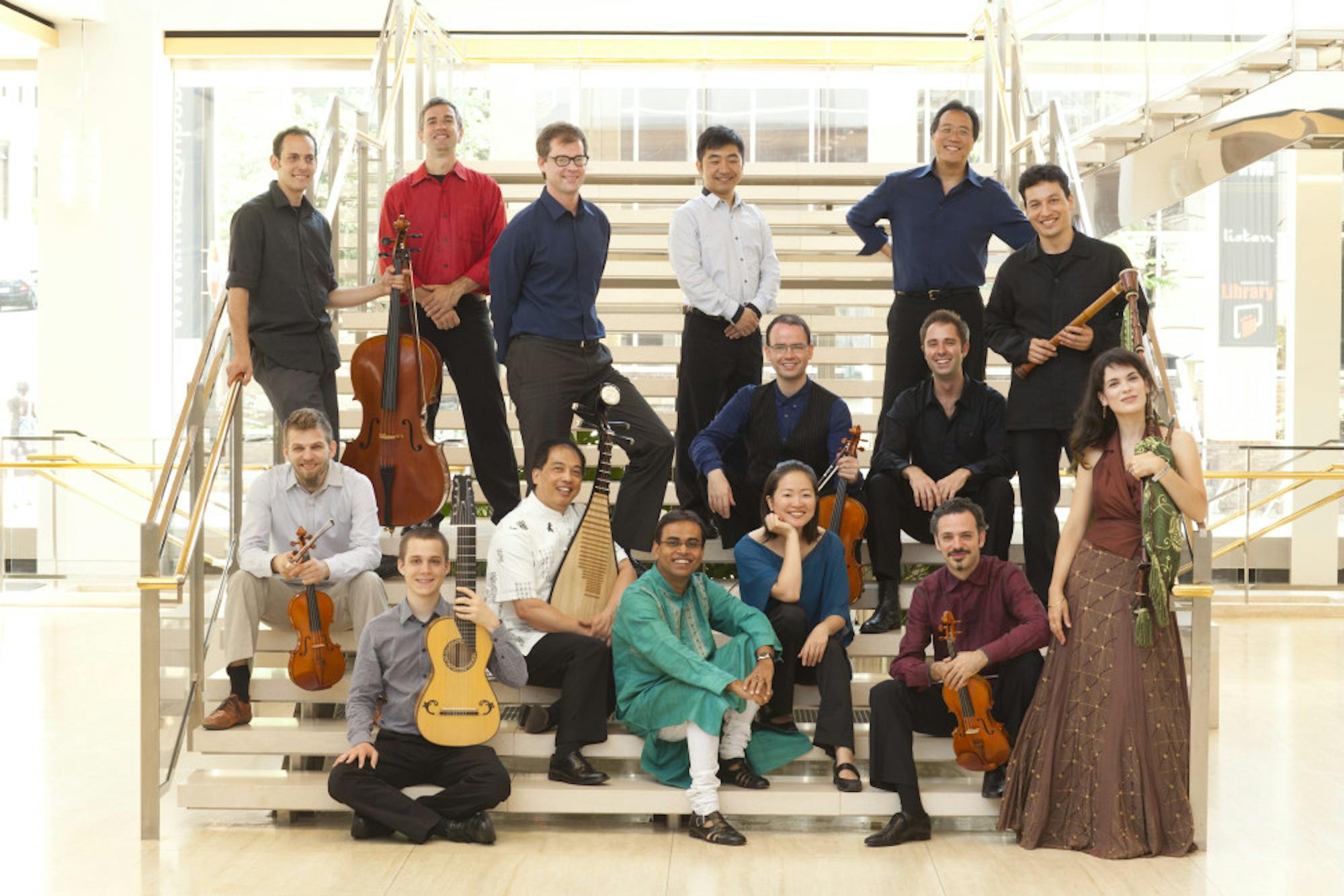When one thinks of renowned cellist Yo-Yo Ma, one likely pictures a soloist surrounded by accompanying string players in a full orchestra, with classical music wafting toward the audience. However, through the 2014-2015 season of the Celebrity Series of Boston, symphony-goers were recently treated to a quite different type of performance by the Silk Road Ensemble, of which Ma serves as artistic director. Now in its fifteenth year, the group's sound is incredibly eclectic: “from flashy surf guitar sounds to ninth century Chinese poetry, from modular playlists to Egyptian rhythms, the Silk Road Ensemble mixes the modern and the traditional, breaking boundaries of ethnicity and era,” according to Ma’s website,
The group's commitment to music from a variety of regions was evident in the repertoire it performed in a full Symphony Hall on Wednesday, March 4. Starting with the spirited piece “Side In Side Out,” created by Kojiro Umezaki, the audience was immediately exposed to a variety of Western and non-Western instruments. Violins, cellos, a contrabass and a clarinet were played alongside the shakuhachi, the pipa and the sheng. The decision to start the night with a full-ensemble piece gave viewers unfamiliar with the group’s work the opportunity to hear the instruments’ sounds and see the musicians’ interactions. The jovial encounters between the musicians on stage, frequently smiling, exchanging glances and moving with the music, fostered a very relaxed atmosphere. This feeling was further enhanced by Ma’s jokes to the audience after the first piece: “Good evening and welcome to summer,” he quipped, given that it was one of the first relatively warm days the city had enjoyed in a while. “We are so happy to be here, and not just because we made it,” he added.
The upbeat atmosphere continued in the second piece, “Taranta Project,” composed by Giovanni Sollima in 2008, in which stringed instruments were played alongside a percussionist. The most surprising element of this segment of the performance came when the percussionist not only added vocals to his part, but also cast part of his sheet music from the stand, promptly standing up to stomp on the stage and pound his body in various rhythms. According to the program, composer Giovanni Sollima meant for this aspect of the piece to “alternatively suggest feverish dances and reveal intricate interlocking rhythmic patterns.” However, this image was not clearly portrayed, making the quest for innovation in the composition feel slightly out of place.
“The Latina 6/8 Suite” brought the performance back on track in what seemed to be a crowd favorite. The sole female performer on stage, Cristina Pato, and 17 people in ensemble shone in her performance on the gaita (Galician bagpipes) as she led the ensemble in a piece that is “part of her LATINA album project,” as mentioned in the playbill and by Pato herself on stage. Again, she added fun aspects to the performance, playfully making her instrument emit a short, high-pitched sound as she squeezed it between her arm and hip.
The diversity of both the instruments and the styles of the pieces continued after intermission in “Paramita” (arranged for the ensemble by Zhao Lin and first performed in the U.S. in Feb. 2015), “Jugalbandi” (an improvisation performed the night of the performance by Mike Block, Sandeep Das, Colin Jacobsen and Kayhan Kalhor) and “Wedding” (composed by clarinetist Kinan Azneh and first performed as an orchestral piece 2007). While the final official piece of the performance, “Wedding,” again featured the whole ensemble, “Jugalbandi” was an improvisational duet between two instruments described in the program as “kamancheh, or Persian spike fiddle” and “tabla, or Indian drums.” The two instruments were accompanied by the violin and the cello in an ethereal piece that picked up energy as it progressed.
According to the playbill, “Wedding” also incorporated some improvisational elements in order to “[capture] the exciting and unpredictable mood one might have found in a typical wedding party taking place in a Syrian village square.” Clearly, the pieces selected for the evening circumnavigated the globe, even extending to Europe and the United States in appended renditions of “O’Neill’s March” (Traditional Irish piece) and “Little Birdie” (composed by Vince Guaraldi, 1973). Overall, though very different from what one might normally expect when attending a performance at Symphony Hall, the Silk Road Ensemble’s energetic music made for a fairly uplifting evening.
Silk Road Ensemble draws on diverse musical traditions

The Silk Road Ensemble brings together some of the most talented performers and composers from Asia, Europe and the Americas to create a unique, collaborative and innovative performance group.
Summary
Silk Road Ensemble delivers diverse performance drawing on musical traditions from around the world. Overall, though very different from what one might normally expect when attending a performance at Symphony Hall, the Silk Road Ensemble’s energetic music made for a fairly uplifting evening.
3 Stars





